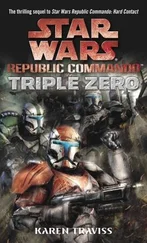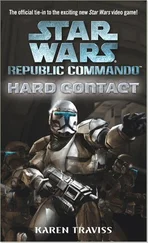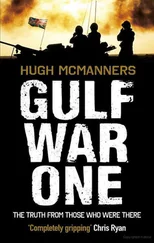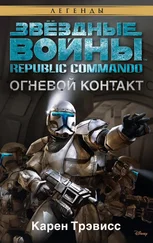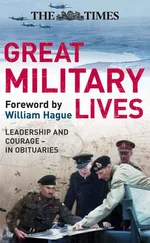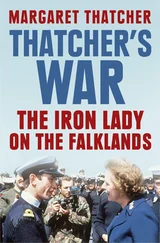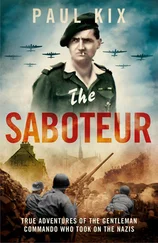Hugh McManners - Falklands Commando
Здесь есть возможность читать онлайн «Hugh McManners - Falklands Commando» весь текст электронной книги совершенно бесплатно (целиком полную версию без сокращений). В некоторых случаях можно слушать аудио, скачать через торрент в формате fb2 и присутствует краткое содержание. Город: London, Год выпуска: 2014, ISBN: 2014, Издательство: Nightstrike Publishing, Жанр: nonf_military, Биографии и Мемуары, на английском языке. Описание произведения, (предисловие) а так же отзывы посетителей доступны на портале библиотеки ЛибКат.
- Название:Falklands Commando
- Автор:
- Издательство:Nightstrike Publishing
- Жанр:
- Год:2014
- Город:London
- ISBN:978-0-992-81540-0
- Рейтинг книги:4 / 5. Голосов: 1
-
Избранное:Добавить в избранное
- Отзывы:
-
Ваша оценка:
- 80
- 1
- 2
- 3
- 4
- 5
Falklands Commando: краткое содержание, описание и аннотация
Предлагаем к чтению аннотацию, описание, краткое содержание или предисловие (зависит от того, что написал сам автор книги «Falklands Commando»). Если вы не нашли необходимую информацию о книге — напишите в комментариях, мы постараемся отыскать её.
Falklands Commando — читать онлайн бесплатно полную книгу (весь текст) целиком
Ниже представлен текст книги, разбитый по страницам. Система сохранения места последней прочитанной страницы, позволяет с удобством читать онлайн бесплатно книгу «Falklands Commando», без необходимости каждый раз заново искать на чём Вы остановились. Поставьте закладку, и сможете в любой момент перейти на страницу, на которой закончили чтение.
Интервал:
Закладка:
We examined the weave of the wardroom carpet in some detail and tried unsuccessfully not to think of the Sheffield .
Exocet is programmed to hit the image on its radar screen amidships, nine feet below the top of her silhouette. The missile launched at Sheffield hit her in exactly that place. How far was the Wardroom from the Ops Room – the target point? Not far enough.
I’ve never been as frightened as at that moment. The rest of my team had gone up to the flight deck with their machine-guns because they wanted to do something – anything at all, rather than go down doing nothing. The imminent threat to life, and one’s inability to do anything about it, made these moments so terrifying. Other dangerous moments, probably more dangerous than this, were not at all frightening at the time because we were in our own element on land, and could do something about it. But in a warship, even one as rigorously capable as Avenger , you are totally dependent upon others. My most fearful moments have all been in aircraft as a passenger, or as a passive participant in air raids.
From the wardroom carpet we counted off the seconds, hearing the roar of the Sea Dart missiles bursting out into the spray, the high-pitched chatter of our machine-guns, the deeper, slower rhythm of the Oerlikon AA guns and the pounding shudder of the big 4.5 inch gun.
Then came Hugo White’s pipe:
“This is the Captain speaking. We seem to have splashed the Exocet with our gun. There is a nasty oily mess off our starboard beam, which seems to be the remains of a Skyhawk that flew over us and was splashed as well. You may be interested to know that the Exocet was only 9kms out when we hit it. I don’t need to tell you that at Mach 1 that’s not very many seconds. I told you when we left Guzz that I was lucky, well here’s proof of it. Well done to you all for a very cool and professional effort.”
“Boat crews assemble at the starboard waist. We’re going to investigate the wreckage.”
After such episodes everyone breathes out heavily and starts talking absolute rubbish in an animated way. I lit a cigar. Andy and I shook our heads at each other.
Another pipe:
“D’yer hear there. This is the Navigator. We’ve just recovered our boat and crew, along with several bits of what’s confirmed as wreckage of an A4 Skyhawk. A document box has been brought back and will be stored in the seamen’s mess-deck. A leg complete with flying suit boot with a book in the pocket was also recovered. That is all.”
Before we set off on Operation Brewers Arms, SBS boss Jonathan Thomson had confided to me that when we returned it would probably all be over. We were always kept away from any planning about other ops that were not relevant to ours, especially future intentions, so that if captured we wouldn’t actually know anything. This little hinted detail was of great comfort in the long days ahead.
We also knew that the Paras had now taken Darwin and Goose Green, that Teal Inlet was secured and that 45 Commando had marched to Douglas cross-country. Although suffering quite a few injuries, 45 were ready to move on again.
Air attacks were still judged likely, though directed at ships and large formations rather than us. Special Forces were deployed well forward to clear enemy OPs (Observation Points) and the flank areas. We were part of this effort.
The last intelligence report from our area indicated a platoon of around 40 men on Mount Brisbane and in the Eagle Mount area. They had a radar on Dutchman’s Island to the north, and there was a good deal of enemy helicopter activity. Their defensive positions looked like shallow lines of trenches that would be easier to infiltrate, rather than – as British military planners would – being sited in depth making infiltration and attack far more dangerous.
There was also a serious possibility of enemy counter-attack threat after we took out their positions. They had several large Chinook helos, ideal for flying in a large enough rapid-reaction force that would have no problem taking us out if handled properly…
On the night of 30 May, Avenger left the Hermes group and steamed south on her own to put us ashore. We had on board the Lynx and crew from another Type 21 HMS Ambuscade , as Avenger’s helo had become unserviceable. They unfortunately had no PNG (Passive Night Goggles) for flying in pitch darkness, so strictly speaking would have to turn on lights to land. As it was an enemy-occupied area I wasn’t happy about this.
As we steamed down the coast of East Falkland, I decided to bombard the suspected enemy on Macbride Head and the radar on Dutchman’s Island. This had been done by gunships on previous nights, so if Avenger continued down the coast shelling sporadically, she could also fire on Mount Brisbane without exciting any particular suspicion. This fire on Mount Brisbane would be very carefully timed to come down as the helo got close to the landing-site, and so mask its delivery runs.
It was interesting for me to be in the ops room during operational firing without any of the safety restrictions of peacetime. Without having one of us on the ground adjusting the fire onto the target, a ship’s radar could instead be used to plot the line along which the shells were going and roughly where they were landing. This was inaccurate, and like the philosophical debate about whether the cannon fired in the desert actually makes a bang if there is nobody there to hear it, there was no way of telling if you were hitting anything at all – but I’m bound to say that…
The whole ship shuddered as each round crashed off into the night. The darkened room was hushed, with only the gunnery orders being audible. The green glow from the radar screens illuminated the white-hooded figures crouched over them. Andy and I stood, rifles in hand, faces completely blackened, watching the scene. The computer-operator on a Type 21 frigate punches in the coordinates and the type of ammunition, then the gun trains onto the target, holds itself on target by constant adjustment despite the heaving of the ship and the imprecision of its course, then fires itself off. When the man on ground sends back a correction over the radio, the operator punches it into his console, while the gun reloads itself and fires again.
Accuracy depends on keeping the highly mobile firing system at sea locked onto a known position on the land, a serious problem that field artillery does not have to address. This is done by using a ‘Beacon MIP’ radar fix on that known position (beacon radar map indication point), then ensuring that the fix on this known point doesn’t slip. The navigator has to calculate his position very carefully, monitor it and calculate his tidal drift, as a check on the computer which should be taking it all into account automatically.
Maintaining this Beacon MIP fix was to become a problem during the last week of the war, with tragic results.
At 0100 on 31 May the LS securing team, with Lieutenant Jim Searight and me plus our TI scanner, took off from the heaving flight-deck of Avenger . Jim was the brother of an artillery officer I knew, who was to be killed in a vehicle accident in Belize just over two years later. Jim had been on the final phase of his basic SBS selection and training when the Falklands crisis blew up. Jonathan Thomson decided he needed every SBS man he could find, so decreed that Operation Corporate was to be their Final Exercise. It was rather more realistic than any of them had imagined. Jim was enjoying life as an ordinary Marine in a patrol run by one of the SBS’ frighteningly capable senior NCO’s.
It was pitch black, the moon obscured by cloud. The Lynx was completely stripped of everything except the two crew seats up front. We hung on grimly in the back, to each other and to the mound of kit that was wedged between us. With no doors, we sat with legs dangling alarmingly out into the darkness, numb fingers grasping our weapons.
Читать дальшеИнтервал:
Закладка:
Похожие книги на «Falklands Commando»
Представляем Вашему вниманию похожие книги на «Falklands Commando» списком для выбора. Мы отобрали схожую по названию и смыслу литературу в надежде предоставить читателям больше вариантов отыскать новые, интересные, ещё непрочитанные произведения.
Обсуждение, отзывы о книге «Falklands Commando» и просто собственные мнения читателей. Оставьте ваши комментарии, напишите, что Вы думаете о произведении, его смысле или главных героях. Укажите что конкретно понравилось, а что нет, и почему Вы так считаете.

